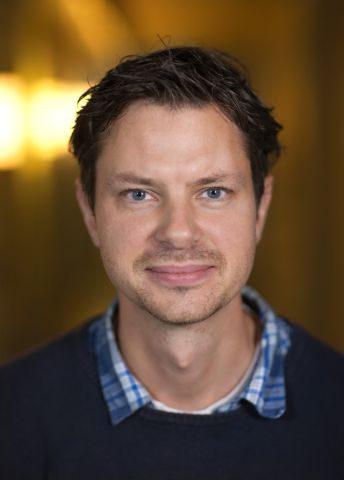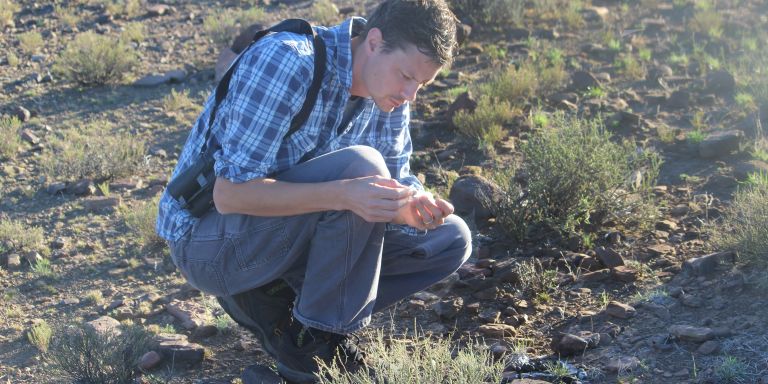
Charlie Cornwallis
PhD, Zoology
Wallenberg Academy Fellow, prolongation grant 2018
Institution:
Lund University
Research field:
Social evolution


Wallenberg Academy Fellow, prolongation grant 2018
Institution:
Lund University
Research field:
Social evolution
Cornwallis has always been curious about nature. His father was a biologist and Charlie was only five when he accompanied him on trips to catch and study birds. Birds remain an important part of his life, but nowadays more as study organisms. His research is focused on explaining the evolution of complex life and cooperation in nature, currently with the help of green algae and ostriches.
“Several of my projects that were no more than ideas a few years ago have started to yield really interesting results. It is incredibly satisfying,” says Cornwallis.
Cooperation often benefits the group, but is by no means always good for the individual. Understanding selfless behavior holds the key to how complex organisms have evolved. DNA molecules combined to form genomes, single-cell organisms merged to become multicellular, and individuals joined together to form societies. Over time, some organisms began to cooperate to form new organizational units such as large families and inter-dependent communities of individuals, while others stuck to a simpler existence. Cornwallis wants to understand why.
“The Wallenberg Academy Fellowship is such an amazing opportunity. Instead of constantly struggling to secure funding, I can afford a larger research team. It has also opened the door to other grants.”
He began studying ostriches in South Africa more than ten years ago. These birds can live in both pairs and large groups, offering insight into how cooperative societies evolve. In the study birds were divided into groups of differing sizes that were kept apart in large enclosures, and who produced the most offspring was measured. It turned out that males have a better chance of reproducing if they are alone with one or just a few females.
With females, it is more complicated. Early on, they gain by being few in number, since there is less competition as they lay their eggs in the communal nest. But when incubation begins, it is better to belong to a larger group, since the females need to take turns in the stressful business of sitting on the eggs for six weeks, while the ambient temperature can vary from minus five to fifty degrees Celsius.
“Large groups of cooperative females protected their nests for longer periods of time. In particular, groups that included individuals that were genetically predisposed to withstand heat were better at incubating their eggs.”
More susceptible females appear to act as free riders, and Cornwallis believed that this would result in heat-tolerant females doing better in smaller group, but they, too, seemed to gain from cooperating. A possible explanation is that those that are free riders when it is hot, help more when it is cold. This may buffer groups from climate change.
The algae project is being conducted on home territory at Lund University. Green algae are favored as experimental organisms because they are easy to grow and manipulate in the laboratory. They can live as single cells, or in large groups containing several thousand cells. It has long been believed that multicellular groups form as protection against zooplankton, because individual green algae exposed to zooplankton form groups in the laboratory, sometimes in just a few hours. But when Cornwallis took a closer look at that hypothesis, the results were surprising. He collected two hundred different strains of green algae from Swedish lakes. When exposed to zooplankton, some strains formed groups while others did not – and the group-forming strains did not survive any better in the presence of zooplankton.
“The idea that algae gain an advantage by being multicellular when predators are around, doesn’t seem to apply to the natural strains of algae we found. We have to go back to the drawing board and try to find out what multicellular group formation is really about.”
Cornwallis and his colleagues now have another hypothesis. Stress activates algal protection mechanisms, which differ depending on their genetic make-up. Some algae form mucus coatings when threatened, and those strains seem to stick together more frequently. This would suggest that formation of a group is not a defense strategy but a by-product of stress mechanisms, that then create opportunities for multicellular evolution.
Cornwallis is now looking for genes that explain algal group formation. In the laboratory algae that form the largest groups can be selected each generation to evolve larger groups, making it possible to identify which genes regulate the process. But it is also important to study what is happening in the wild. For this he uses a large database on Swedish lakes that has been amassing information since the 1950s. It now contains data from thousands of lakes, including details of temperature, acidity, chemicals, and the species living in different places. Cornwallis regards this as a treasure trove of information.
“We’ve used it to classify the environmental preferences of several hundred species of multicellular and unicellular algae. This can tell us what conditions favor and disfavor multicellular life, and we can test them experimentally. We hope this combination of wild monitoring and controlled lab studies will unlock the evolutionary secrets to how life on Earth evolved.”
Text Lisa Kirsebom
Translation Maxwell Arding
Photo Charlie Cornwallis, Julian Melgar, Magnus Bergström